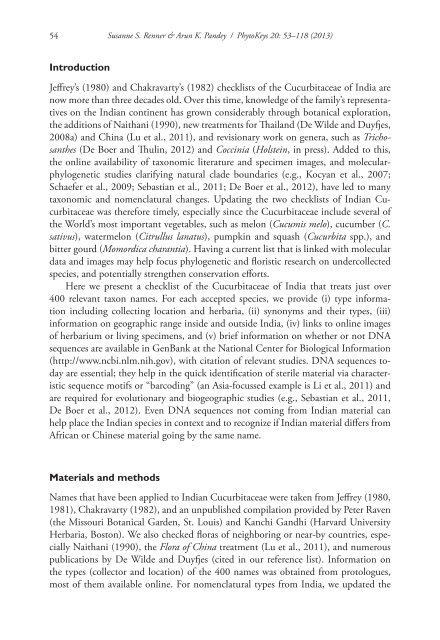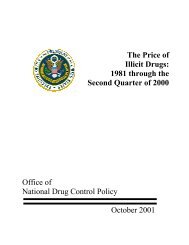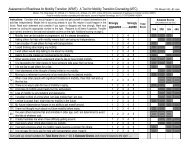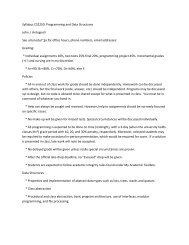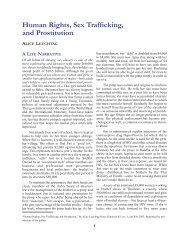The Cucurbitaceae of India: Accepted names, synonyms ...
The Cucurbitaceae of India: Accepted names, synonyms ...
The Cucurbitaceae of India: Accepted names, synonyms ...
You also want an ePaper? Increase the reach of your titles
YUMPU automatically turns print PDFs into web optimized ePapers that Google loves.
54<br />
Susanne S. Renner & Arun K. Pandey / PhytoKeys 20: 53–118 (2013)<br />
Introduction<br />
Jeffrey’s (1980) and Chakravarty’s (1982) checklists <strong>of</strong> the <strong>Cucurbitaceae</strong> <strong>of</strong> <strong>India</strong> are<br />
now more than three decades old. Over this time, knowledge <strong>of</strong> the family’s representatives<br />
on the <strong>India</strong>n continent has grown considerably through botanical exploration,<br />
the additions <strong>of</strong> Naithani (1990), new treatments for Thailand (De Wilde and Duyfjes,<br />
2008a) and China (Lu et al., 2011), and revisionary work on genera, such as Trichosanthes<br />
(De Boer and Thulin, 2012) and Coccinia (Holstein, in press). Added to this,<br />
the online availability <strong>of</strong> taxonomic literature and specimen images, and molecularphylogenetic<br />
studies clarifying natural clade boundaries (e.g., Kocyan et al., 2007;<br />
Schaefer et al., 2009; Sebastian et al., 2011; De Boer et al., 2012), have led to many<br />
taxonomic and nomenclatural changes. Updating the two checklists <strong>of</strong> <strong>India</strong>n <strong>Cucurbitaceae</strong><br />
was therefore timely, especially since the <strong>Cucurbitaceae</strong> include several <strong>of</strong><br />
the World’s most important vegetables, such as melon (Cucumis melo), cucumber (C.<br />
sativus), watermelon (Citrullus lanatus), pumpkin and squash (Cucurbita spp.), and<br />
bitter gourd (Momordica charantia). Having a current list that is linked with molecular<br />
data and images may help focus phylogenetic and floristic research on undercollected<br />
species, and potentially strengthen conservation efforts.<br />
Here we present a checklist <strong>of</strong> the <strong>Cucurbitaceae</strong> <strong>of</strong> <strong>India</strong> that treats just over<br />
400 relevant taxon <strong>names</strong>. For each accepted species, we provide (i) type information<br />
including collecting location and herbaria, (ii) <strong>synonyms</strong> and their types, (iii)<br />
information on geographic range inside and outside <strong>India</strong>, (iv) links to online images<br />
<strong>of</strong> herbarium or living specimens, and (v) brief information on whether or not DNA<br />
sequences are available in GenBank at the National Center for Biological Information<br />
(http://www.ncbi.nlm.nih.gov), with citation <strong>of</strong> relevant studies. DNA sequences today<br />
are essential; they help in the quick identification <strong>of</strong> sterile material via characteristic<br />
sequence motifs or “barcoding” (an Asia-focussed example is Li et al., 2011) and<br />
are required for evolutionary and biogeographic studies (e.g., Sebastian et al., 2011,<br />
De Boer et al., 2012). Even DNA sequences not coming from <strong>India</strong>n material can<br />
help place the <strong>India</strong>n species in context and to recognize if <strong>India</strong>n material differs from<br />
African or Chinese material going by the same name.<br />
Materials and methods<br />
Names that have been applied to <strong>India</strong>n <strong>Cucurbitaceae</strong> were taken from Jeffrey (1980,<br />
1981), Chakravarty (1982), and an unpublished compilation provided by Peter Raven<br />
(the Missouri Botanical Garden, St. Louis) and Kanchi Gandhi (Harvard University<br />
Herbaria, Boston). We also checked floras <strong>of</strong> neighboring or near-by countries, especially<br />
Naithani (1990), the Flora <strong>of</strong> China treatment (Lu et al., 2011), and numerous<br />
publications by De Wilde and Duyfjes (cited in our reference list). Information on<br />
the types (collector and location) <strong>of</strong> the 400 <strong>names</strong> was obtained from protologues,<br />
most <strong>of</strong> them available online. For nomenclatural types from <strong>India</strong>, we updated the


